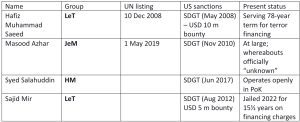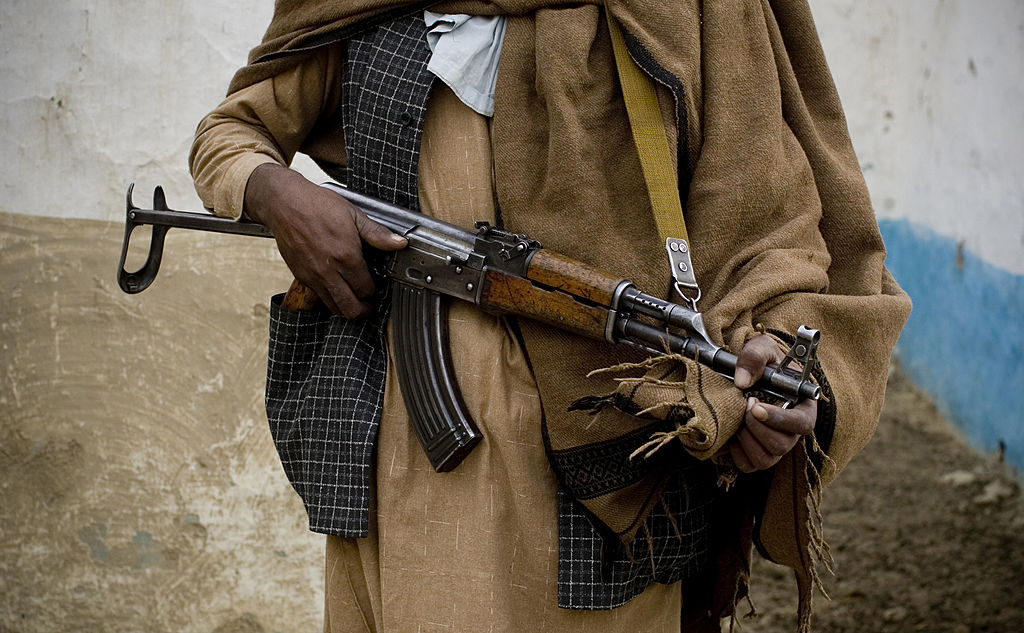Operation Sindoor, launched by India on the night of 6–7 May to punish the terror masterminds and operatives based in Pakistan who were responsible for the Pahalgam terror incident, significantly destroyed the Lashkar-e-Taiba headquarters in Muridke and the Jaish-e-Muhammad headquarters at Bahawalpur in Pakistan’s Punjab province.
In the heinous terror incident of 22 April in Pahalgam, a group of terrorists, including two Pakistanis, killed 26 civilians. The strike drew widespread condemnation around the world.
In a swift surgical strike, carried out with precision bombing, nine major terror camps—including those at Muridke and Bahawalpur, were hit hard, inflicting grave damage on Pakistan’s terror infrastructure. Acting on intelligence inputs to avoid collateral damage, the planners selected targets away from civilian areas.
Although the operation focused only on terror facilities and not Pakistani military installations, Pakistan’s long record of using terrorism as state policy, and of nurturing such groups, casts a shadow of dubious diplomacy. In effect, external terrorism remains an inseparable political tool in Pakistan’s geopolitical strategy.
Sanctions, Leadership, and the Survival Playbook of Pakistan-Based Terrorist Groups
Three Pakistan-rooted terrorist organisations dominate violence directed at India, particularly Jammu & Kashmir: Lashkar-e-Taiba (LeT), Jaish-e-Mohammed (JeM) and Hizbul Mujahideen (HM). These organisations are outlawed in India and, and in many other countries across the world, including global organisations like the United Nations. They are designated Foreign Terrorist Organisations (FTOs) by the United States, and both LeT and JeM are proscribed even in Pakistan. Their leaders are blacklisted and their bank accounts and assets frozen.
Yet they endure. Their secret lies in a nimble ability to shed one skin and grow another: when a parent body is proscribed, a “charity”, “relief trust” or freshly minted political outfit swiftly takes its place.
The pattern is starkest in the case of Sajid Mir, the Lashkar commander who masterminded the 2008 Mumbai attacks. For years, Islamabad insisted he was either dead or untraceable; only when the Financial Action Task Force (FATF) threatened economic pain did the authorities quietly arrest and convict him, on the safer charge of terror financing rather than mass murder. His story captures both the power, and the limits, of external pressure on Pakistan’s counter-terrorism calculus.
A quick glance at the ban record

Lashkar-e-Taiba
Founded in the late 1980s by Hafiz Muhammad Saeed, LeT styled itself the “Army of the Pure”, determined to wrest Kashmir, and ultimately the whole of India, for Pakistan, and establish a Muslim caliphate across the sub-continent. Its signature atrocities include the 2001 attack on India’s Parliament, the 2006 Mumbai train bombings, and, most infamously, the three-day siege of Mumbai in November 2008 that left 166 people dead.
Pakistan banned LeT in January 2002, but the movement simply morphed into Jamaat-ud-Dawa (JuD), already registered as a charity. When JuD itself came under pressure, fund-raising flowed through the Falah-e-Insaniat Foundation (FIF), Idara Khidmat-e-Khalq, Al-Anfal Trust, and a growing list of anodyne-sounding fronts. Newer offshoots, such as The Resistance Front (TRF), dispense with overt religious branding altogether, making them harder to flag under existing sanctions.
Saeed’s own journey mirrors that agility. Detained, placed under house arrest, and released several times, he was finally handed a 78-year jail term in 2020, largely under FATF pressure. A US$10 million American reward for information leading to his conviction still stands, but few believe he will ever face trial for the Mumbai carnage.
Jaish-e-Mohammed
JeM sprang to life in early 2000 when Masood Azhar called for jihad in Kashmir. Within two years Islamabad had proscribed JeM, yet the group enjoyed a rebirth as Khuddam-ul-Islam and, when that alias fell, as the “charitable” Al-Rehmat Trust.
Azhar’s personal freedom tells its own tale. Detained and under house arrest between December 2001 and December 2002, with Pakistan failing to charge him for the 2001 Parliament attack, he was reportedly confined again after the 2008 Mumbai attacks, only to “vanish” from public view. In 2019 China finally lifted its veto against listing him at the United Nations, but no Pakistani court has yet secured a conviction.
Hizbul Mujahideen
HM’s current chief, Syed Salahuddin, continues to broadcast from Muzaffarabad, calling for Kashmiri accession to Pakistan. The United States declared him a Specially Designated Global Terrorist (SDGT) in 2017 and, weeks later, branded HM itself an FTO. Islamabad’s stance remains ambiguous: a 2003 promise to ban the group was never codified; Salahuddin moves unimpeded in Pakistan-administered Kashmir, granting interviews in which he vows fresh attacks on Indian targets.
The terror leaders at a glance

Sajid Mir: the man Islamabad declared dead — until it didn’t
Investigators have long described Sajid Mir as the linchpin of the 2008 Mumbai plot. He recruited David Headley, bank-rolled Headley’s “immigration consultancy” cover in Mumbai, and calmly instructed the gunmen by telephone as the massacre unfolded.
In 2011 a Chicago grand jury indicted Mir for the Mumbai attack. The United States posted a $5 million reward and, in 2012, the US Treasury designated him an SDGT. When queried, Pakistan first claimed Mir could not be traced; later, policy-makers upgraded his status from “absconding” to “confirmed dead”. Nevertheless, successive US reports on terrorism insisted that Mir was in Pakistan.
In 2022, under FATF pressure, Mir was quietly arrested; in May 2022, a terrorism court sentenced him to 15½ years’ imprisonment. Tellingly, the conviction was for LeT financing, not for masterminding the 26/11 massacre. The timing is clear: Pakistan needed to exit FATF’s “grey list” and duly showcased Mir’s conviction at the watchdog’s plenary.
Why the bans keep failing
- Front-of-house charities – Outfits such as JuD, FIF and Al-Rehmat Trust cloak terrorist networks in a veneer of benevolence, complicating the task for regulators and donors alike.
- Selective enforcement – Convictions arrive only when outside pressure peaks. Saeed’s 2020 sentence, Mir’s 2022 volte-face and the re-banning of JuD and FIF in 2019 all coincided with looming FATF deadlines or worldwide outrage after high-profile attacks. Almost immediately, JuD and FIF adopted yet new identities, continuing their radical activity.
- Strategic utility – Groups focused on Kashmir retain value for elements within Pakistan’s security establishment; leaders deemed “assets” are seldom pursued with vigour.
- Name-change game – Each new alias restarts the bureaucratic clock. By the time the UN or Washington designates a fresh front, funds and recruits have already flowed through it — and on to the next incarnation.
International sanctions, UN blacklists and FATF scrutiny Grey List are not without effect: they put a break on external money flow to the country, freeze bank accounts of terror groups and terrorists, hinder travel, and, in Saeed’s and Mir’s cases, produce prison terms.
Yet the record that Pakistan maintains reveals a pattern of grudging, piecemeal compliance rather than wholesale dismantling of terrorist infrastructure. Saeed and Mir were jailed on diluted charges, not for the killings they engineered.
So long as terrorist leaders calculate that they can outwait external pressure; so long as charitable facades provide a revolving door back into business; and so long as the state continues to believe in the notion of “good versus bad” terror, outfits such as Lashkar-e-Taiba, Jaish-e-Mohammed and Hizbul Mujahideen will remain in play.










